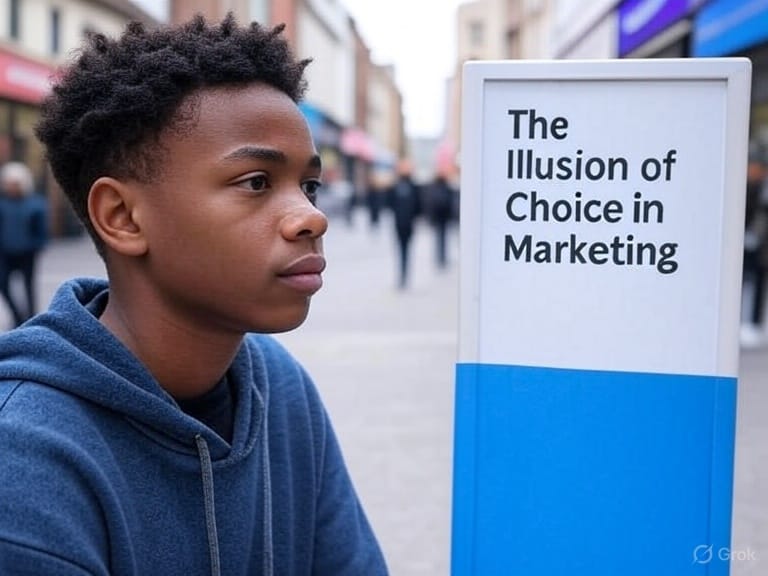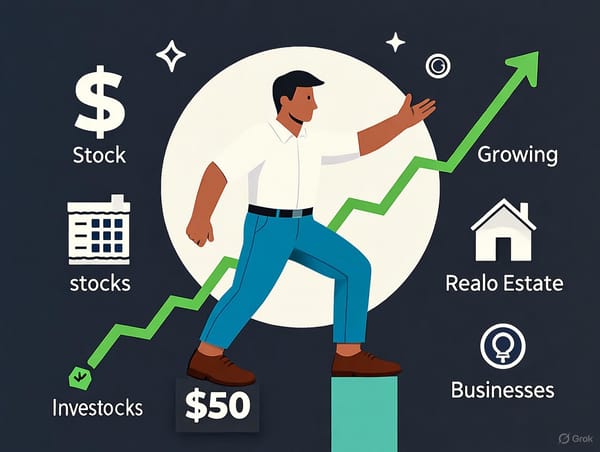Illusion of Choice
Marketers craft an "illusion of choice" by curating options that subtly guide your decisions while making you feel in control.

In a world overflowing with options, choosing feels like freedom. But what if your choices are being subtly orchestrated? Marketers have perfected the "illusion of choice," a tactic that guides your decisions while making you feel in control. From supermarket aisles to streaming algorithms, this psychological strategy shapes your preferences without you noticing. Here’s how it works, why it’s so effective, and how you can reclaim your decision-making power.
What Is the Illusion of Choice?
The illusion of choice is a marketing strategy that creates the appearance of freedom while steering you toward a predetermined outcome. By curating a limited set of options, marketers exploit cognitive biases and emotional triggers to influence your decisions. You think you’re choosing freely, but your options have been carefully engineered to align with their goals.
The Psychology Behind It
Marketers tap into several psychological principles to craft this illusion:
- Choice Overload: Too many options can overwhelm, leading to decision fatigue. Marketers offer a curated selection to simplify your choice while nudging you toward their preferred option.
- Anchoring: The first option you see sets the stage. For example, a $500 product shown first makes a $200 alternative seem like a bargain, even if it’s overpriced.
- Scarcity and Urgency: Limited-time offers or "only 3 left in stock" warnings trigger fear of missing out (FOMO), pushing you to act quickly—often in the marketer’s favor.
- Default Bias: Pre-selected options, like a default subscription plan, are often accepted because they’re easy. Marketers set defaults to benefit their bottom line, knowing many won’t bother to change them.
Real-World Examples
Consider subscription services like streaming platforms or software providers. You’re often presented with three tiers: basic, standard, and premium. The standard plan is priced and positioned as the "best value," nudging you to select it. A 2023 study by the Journal of Consumer Research found that 68% of consumers choose the middle option in tiered pricing, even when it’s not the most cost-effective.
In supermarkets, essentials like milk are placed at the back, forcing you to navigate aisles stocked with high-margin items. Eye-level shelves often hold pricier brands, as studies show 60% of shoppers choose products at eye level without comparing alternatives.
Online, the illusion is even more pervasive. Algorithms on platforms like Netflix or Amazon curate recommendations based on your past behavior, limiting your exposure to alternatives. This keeps you engaged longer, boosting the platform’s metrics. For example, Netflix’s recommendation engine drives 80% of viewer choices, according to company data.
Breaking Free from the Illusion
Awareness is your first defense against the illusion of choice. By recognizing these tactics, you can make decisions that truly reflect your needs. Here’s how:
- Scrutinize Options: Look beyond the presented choices. Research alternatives, compare prices, and seek out unadvertised options.
- Know Your Needs: Define your priorities before shopping or subscribing. Clear goals help you resist manipulative framing.
- Challenge Defaults: Question pre-selected options or urgent prompts. Is the "limited-time offer" really urgent, or is it a tactic to rush you?
- Pause and Reflect: Take a moment to evaluate your decision. A brief pause can help you spot biases like anchoring or FOMO.
Conclusion: Take Back Control
The illusion of choice is a powerful tool marketers use to shape your decisions while preserving the facade of freedom. By understanding its psychological roots and staying vigilant, you can outsmart these tactics and make choices that align with your true preferences. Next time you’re faced with a curated set of options, pause, question, and choose with intention—because real freedom comes from seeing through the illusion.





